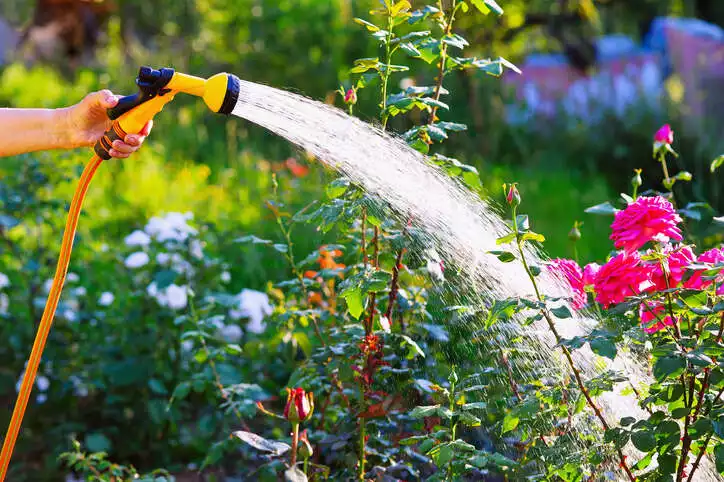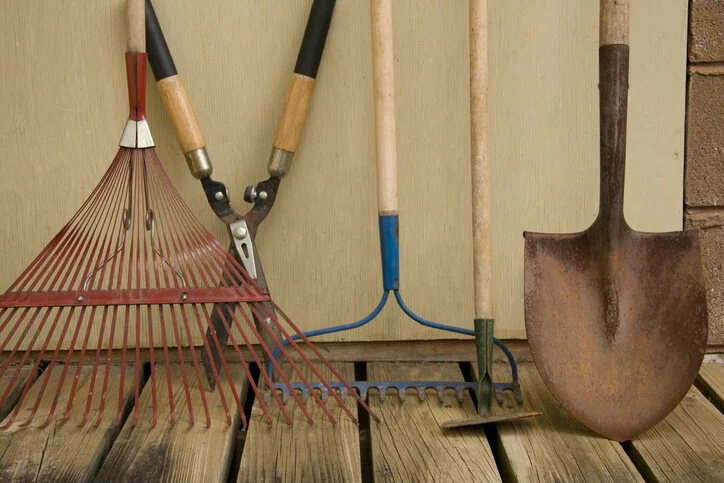Access Self Storage Blog
How To Build the Ultimate Garden
Spring has sprung, and for many homeowners, that means it’s time to get out into the garden again. Whether you’re just getting started or are looking to expand your current...
Storage Tips
Spring has sprung, and for many homeowners, that means it’s time to get out into the garden again. Whether you’re just getting started or are looking to expand your current green space into the ultimate garden, there are plenty of ways to make yours stand out in the crowd.
Building your dream garden can be a fun and rewarding experience, but it requires careful planning and preparation. Read on for some steps to consider while you’re plotting out your best garden ever, and head on over to an Access Self Storage location near you to grab some extra room for your gardening tools and equipment as you get started!
Determine Your Garden’s Purpose
Do you want to grow vegetables, flowers, or a mix of both? Do you want to create a peaceful retreat or a vibrant social space? Knowing what your ideal garden looks like will help you figure out the best time to start your garden and help you plan your space more efficiently.
Choose the Right Location
Look for a spot that receives plenty of sunlight, has good drainage, and is easily accessible for watering and maintenance. If you have pets or frequent visitors in your yard, you may also want to consider choosing a space that can be fenced to help protect your plants.
Plan the Layout
Sketch out a rough plan for your garden, considering the different plants you want to grow and their spacing requirements. Consider adding paths, seating areas, and other features to make the space more functional and enjoyable.
Prepare the Soil
Start by removing any weeds and debris from the area, then work in plenty of organic matter, like compost or well-rotted manure, to improve soil fertility and structure. As you’re preparing your garden soil, pay attention to the space available for plants to help as you plan the next step.
Choose Your Plants
Select plants that are well suited to your climate and soil type and will thrive in the amount of sunlight your garden receives. Consider incorporating a mix of annuals and perennials to create a dynamic, ever-changing space.
Although it’s tempting to go overboard with all the cool plants you can try to grow, be realistic about the number of plants you can hold. Check the planting instructions for seeds and do some research on the size of different plant types, so you know how much space every plant will need.
Add Hardscaping Elements
Consider adding features like raised beds, trellises, or water features to enhance the visual appeal of your garden and create a sense of structure. If you’ve been looking to create an outdoor entertainment space in your yard, this is also a great opportunity to add seating areas and get your space all ready for entertaining.
Incorporating Raised Garden Beds
Looking for a way to mix up the look of your garden, or hoping to take a little bit of a load off your back throughout the gardening process? Consider incorporating raised garden beds! The best raised garden beds for your garden will depend somewhat on the look you have in mind for your space and the amount of room you have to work with. There are raised gardens available in all sorts of shapes and heights.
Those who enjoy woodworking might even be interested in making their own raised garden beds. While you can make your garden beds however you’d like, you’ll want to think about factors like durability, rot resistance, and cost to choose the best wood for creating your raised garden beds. Often, cedar, black locust, and redwoods are recommended for garden beds. Pine is also an option, although it tends to be less rot-resistant, so may not be as long-lasting.
Maintain Your Garden

Regular maintenance is key to keeping your garden healthy and vibrant. This includes watering, fertilizing, pruning, and weeding on a regular basis.
Remember, building the ultimate garden is an ongoing process that requires patience, dedication, and a willingness to learn and experiment. Enjoy the journey, and don’t be afraid to try new things!
When Is the Best Time To Start a Garden?
The best time to start a garden can vary depending on several factors, such as your location, climate, and the type of plants you want to grow. In general, the ideal time to start a garden is in the spring, after the last frost date in your area. This is when the soil has warmed up enough to allow for seed germination and the growth of young plants.
However, if you live in a warm climate with mild winters, you may be able to start your garden earlier in the year. On the other hand, if you live in a colder climate with a shorter growing season, you may need to wait until later in the spring or even early summer to start planting.
It’s important to research the ideal planting times for the specific types of plants you want to grow, as certain plants require different planting times and conditions. Additionally, some plants can be started indoors in containers before being transplanted outside, which can allow for an earlier start to the growing season.
Overall, the best time to start a garden is when the weather and soil conditions are optimal for the plants you want to grow and when you have the time and resources to properly prepare and maintain the garden.
When Is the Best Time To Water a Garden?
The best time to water your garden is typically in the morning before the sun is high in the sky. Watering in the morning allows the plants to absorb the moisture they need before the heat of the day sets in. This can help prevent water loss through evaporation and reduce the risk of fungal diseases, which can thrive in warm, moist conditions.
Watering in the evening or at night is generally not recommended, as the water can remain on the leaves and encourage the growth of fungal diseases. Additionally, watering at night can make the soil too damp, which can lead to root rot and other issues.
However, if watering in the morning is not possible, watering in the late afternoon can be a good alternative. This allows enough time for the leaves to dry before nightfall, reducing the risk of fungal growth.
Note that the frequency and amount of watering can vary depending on the type of plants you have, the climate and weather conditions, and the soil type. It’s crucial to monitor your garden regularly and adjust your watering schedule as needed to ensure your plants are getting the right amount of moisture.
How To Store Garden Tools

Storing garden tools properly keeps them in good condition and extends their life spans. By following these steps, you can help keep your garden tools in top shape and ready to use whenever you need them. Below are some steps to follow for storing garden tools.
Clean the Tools
Before storing your tools, clean them thoroughly. Use a wire brush or steel wool to remove any rust or debris, and wipe them down with a cloth or paper towel to remove any dirt or grime.
Sharpen the Blades
If your tools have blades, such as pruning shears or hedge trimmers, it’s a good idea to sharpen them before storing them. This will ensure they are ready to use when you need them again.
Oil the Metal Parts
To prevent rust and corrosion, apply a light coating of oil to the metal parts of your tools. Use a cloth or paper towel to spread the oil evenly over the surface, and be sure to wipe off any excess.
Hang the Tools
To keep your tools organized and easily accessible, consider hanging them on a pegboard or wall-mounted garden tool rack. These types of garden tool organizers will also keep them off the ground, which can help prevent damage and rust.
Store in a Dry Place
It’s important to store your tools in a dry place to prevent rust and other damage. A shed or garage is ideal, but if you don’t have access to indoor storage, you can cover your tools with a tarp or other protective covering. For those lacking a shed or extra garage space at home, a self storage unit may also be useful for storing garden supplies.
Self Storage: Your Hobby Shed for Garden Supplies
Fulfilling your vision for the ultimate garden requires continuous upkeep using all the outdoor gardening tools and supplies you’ve stockpiled. Whether these bulky items have taken over your garage or your shed is simply too small to accommodate them all, self storage can always serve as a solution.
Access Self Storage serves communities in New York, New Jersey, and Connecticut with storage units that offer all the space and convenient features you need. Looking to clear up room at home and start storing your gardening and other outdoor supplies with us? Search for a storage facility near you, then rent or reserve a unit online today!
Other Articles for You

Navigating the Challenges of Rising Economic Costs
Groceries are more expensive than they used to be. Home prices are significantly higher than they were a few years ago. Automotive prices are up, insurance rates are up, and…
ReadTop 5 Storage Mistakes
Access Self Storage has been a leading industry expert since 1976. As I'm sure you can imagine, we have plenty of dos and don'ts collected from the travails of customers throughout our 44-year history. A poll of our employees has yielded our list of the Top 5 Storage Mistakes NOT to make:
Read
How to Store a Mattress the Right Way
Maybe your college student’s room is going to become your fabulous new home gym, or it’s time for that twin bed to become a double. What should you do with the old mattress? It’s still in good shape, but you don’t want to throw it out—and what if your kid moves back home after college? What if you never use the exercise equipment and decide to turn the space into a guest room instead? (It’s been known to happen!)
Read
How to Live the Road Warrior Lifestyle
Maybe you’ve seen or heard of someone who can work on-the-go? They have a remote job that allows them the freedom to work from where they want, probably when they…
Read